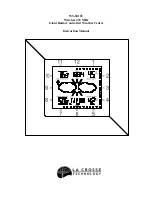
51
ENGLISH
INFORMATION
------------------------------------------------------------------------------------------------------------------
Proxyserver
A proxy or proxy server is a service program
for computer networks that administers data
transfer. It makes data transfer faster, and can
also increase security by implementing access
control mechanisms.
The transfer is conducted between computers or
programs in computer networks. On the server
side, the proxy acts as a client; on the client
side, it acts as a server.
Router
A router is a network component that links sev-
eral computer networks.
The router analyses (on the basis of layer 3
information) the network packages of a protocol
it receives and forwards it to the intended desti-
nation network.
Conventional routers work on layer 3 of the
application layer. A router has an interface for
every network connected to it. When data is
received, the router determines the correct path
to the destination and thereby the suitable inter-
face via which the data can be transferred. For
this it uses a locally available routing table that
specifies via which router connection a particu-
lar network can be reached.
Security(WEP/WPA)
WEP (wired equivalent privacy) is the standard
encryption algorithm for WLAN. It controls both
access to the network as well as ensuring the
confidentiality and integrity of data. This proce-
dure is considered insecure nowadays.
For this reason, more recent WLAN installations
should use the more secure WPA encryption.
V-Tuner
Service provider that provides Internet radio
stations.
Wi-Fi
The Wi-Fi Alliance is an organisation that has
taken on the task of certifying products from
different manufacturers on the basis of the IEEE-
802.11 standard, thereby ensuring that different
wireless devices can operate in parallel.
On 31 October 2002, the consortium an-
nounced a new encryption technology – Wi-Fi
Protected Access (WPA) – a part of the (then)
forthcoming IEEE standard 802.11i which would
replace the WEP encryption procedure, which
was already regarded as insecure before the
new standard came into force. After 802.11i
came into force, the Wi-Fi group coined the term
WPA2.
IEEE 802.11e is an industrial standard issued
by the Institute of Electrical and Electronics En-
gineers (IEEE) and a supplement to the wireless
LAN standard IEEE 802.11 for supporting the
quality of service.
802.11e works according to a similar principle
as the QoS procedure DiffServ. Data packages
in the WLAN are marked by the sender and the
access point is stopped in order to handle pack-
ages with higher priority.
With the aid of 802.11e, real-time application
such as Voice over IP are better supported as
they require a certain bandwidth in the network
to ensure the connection is not interrupted if
other network traffic creates too great a burden
on the available data transfer rate.
WPS
Wi-fi protected setup (WPS) is a standard devel-
oped by the Wi-Fi Alliance for setting up wire-
less home networks with encryption simply. Your
device provides you with the option of entering
a PIN or push button configuration.








































